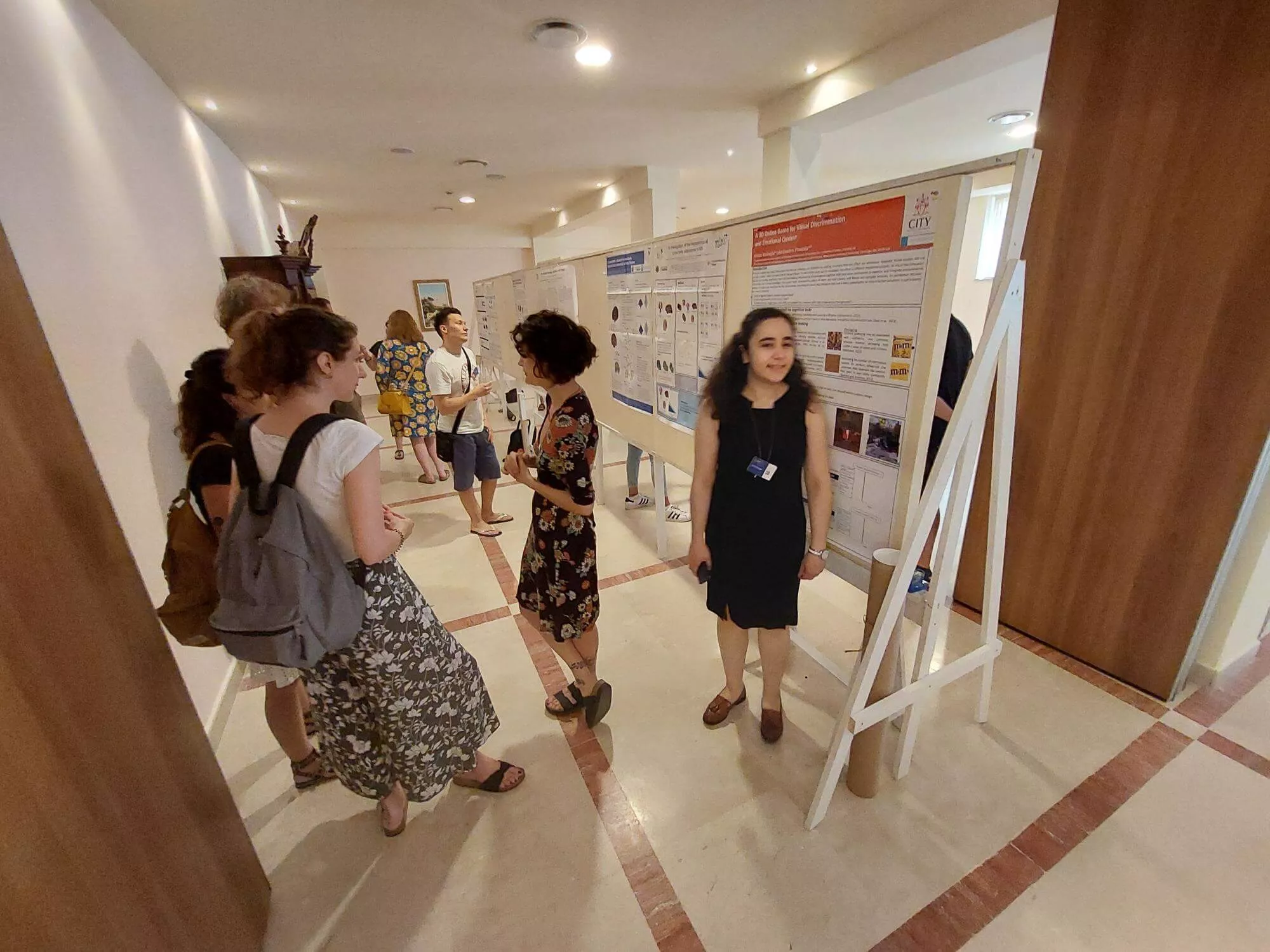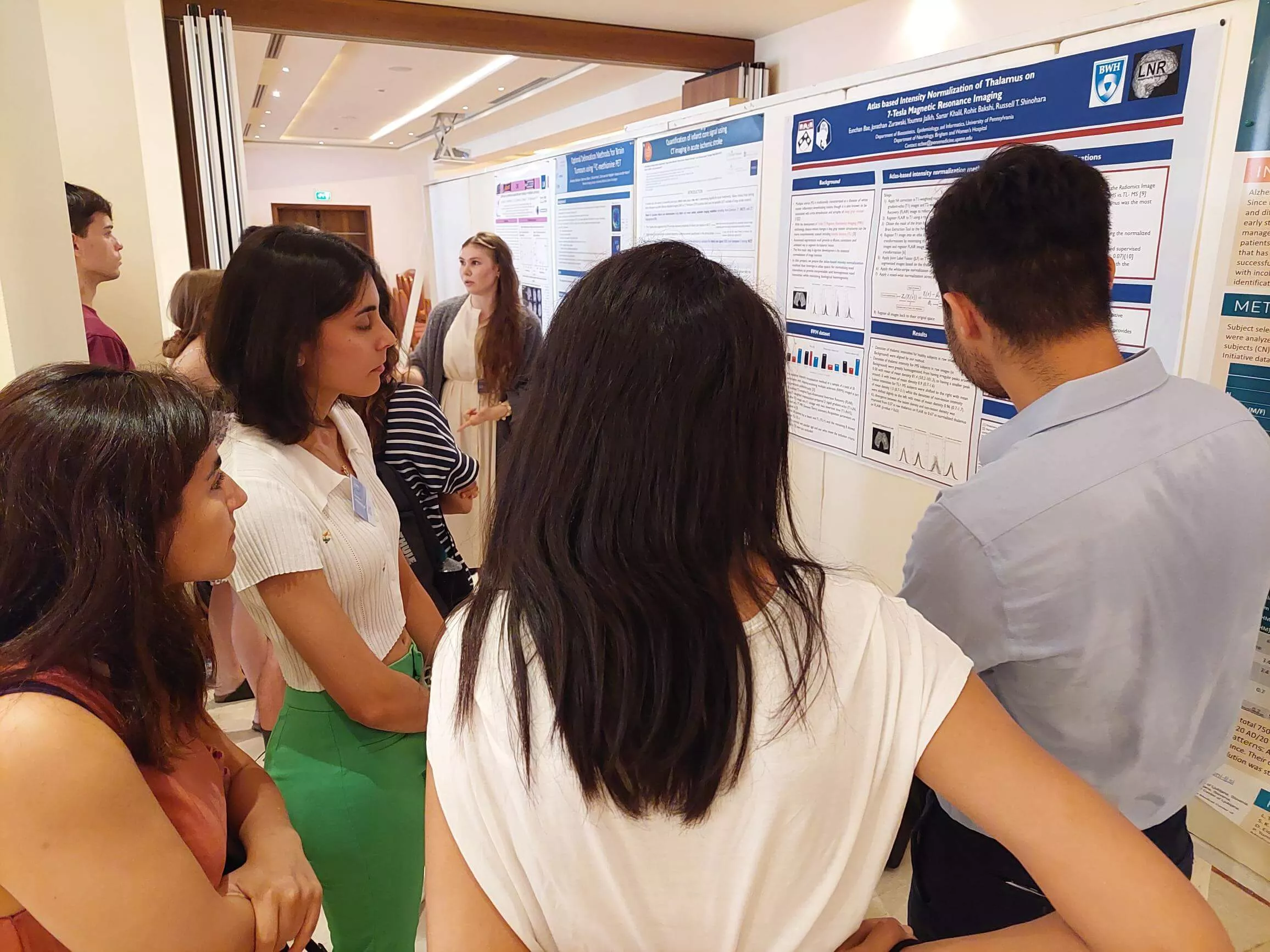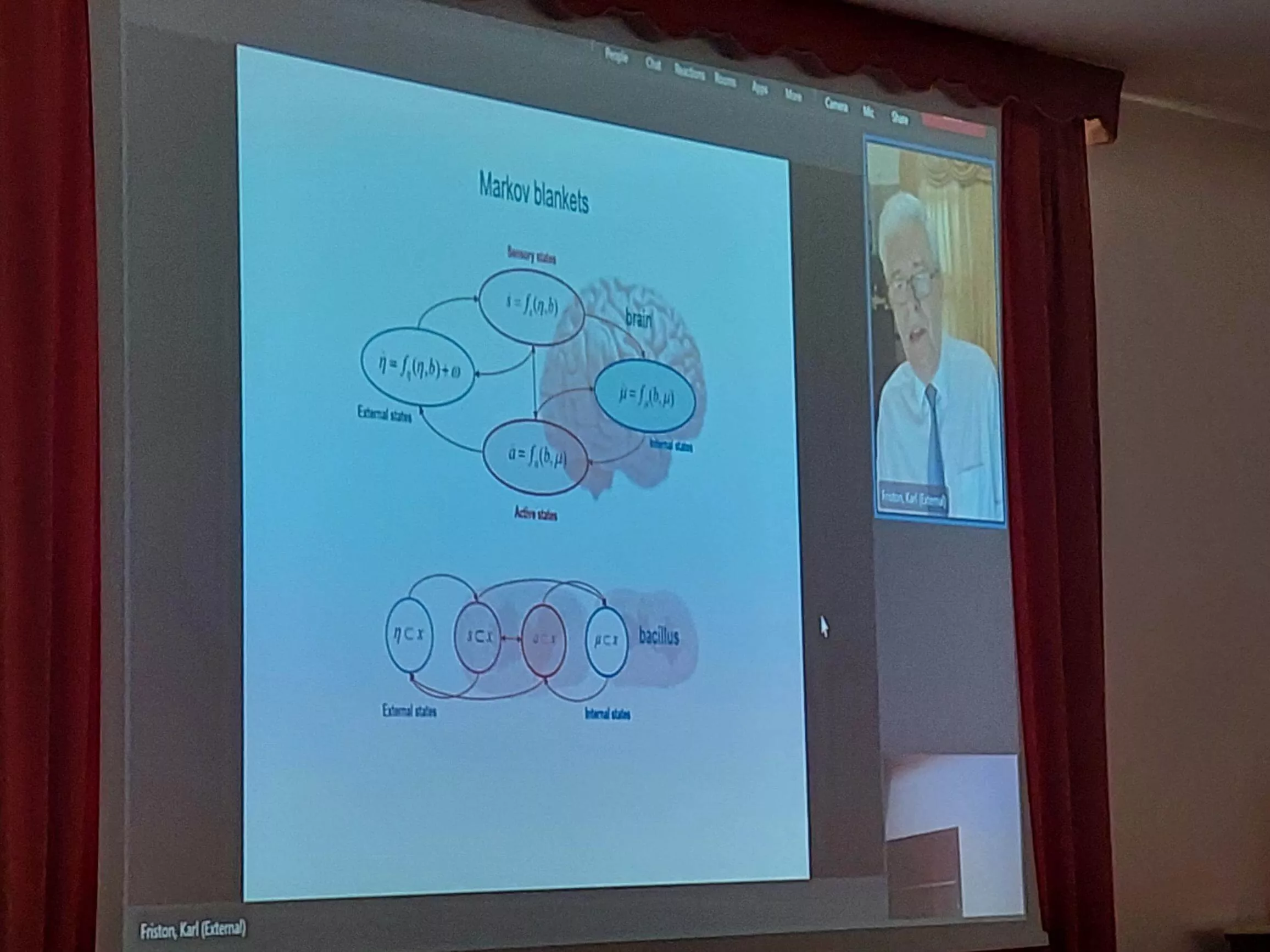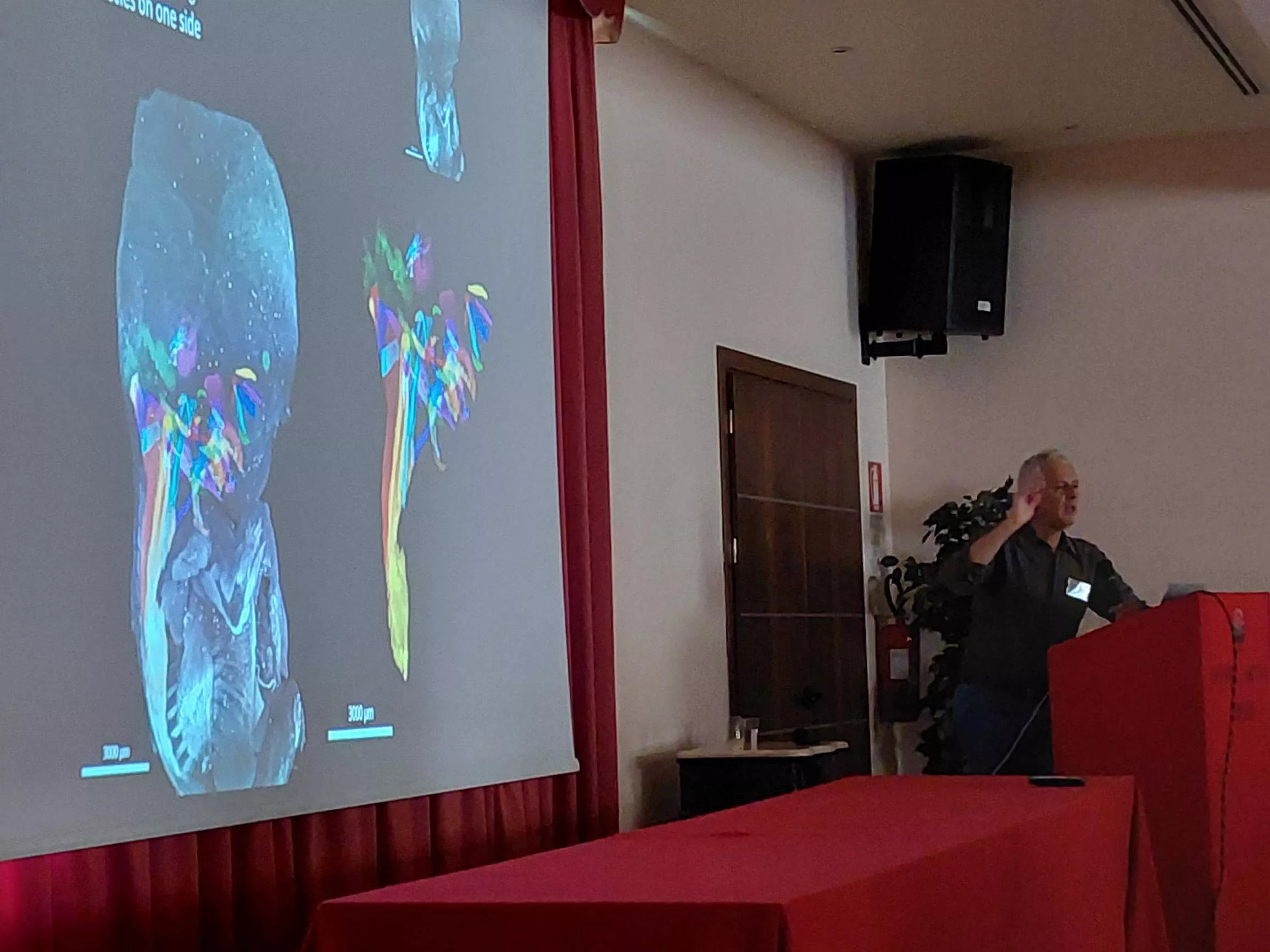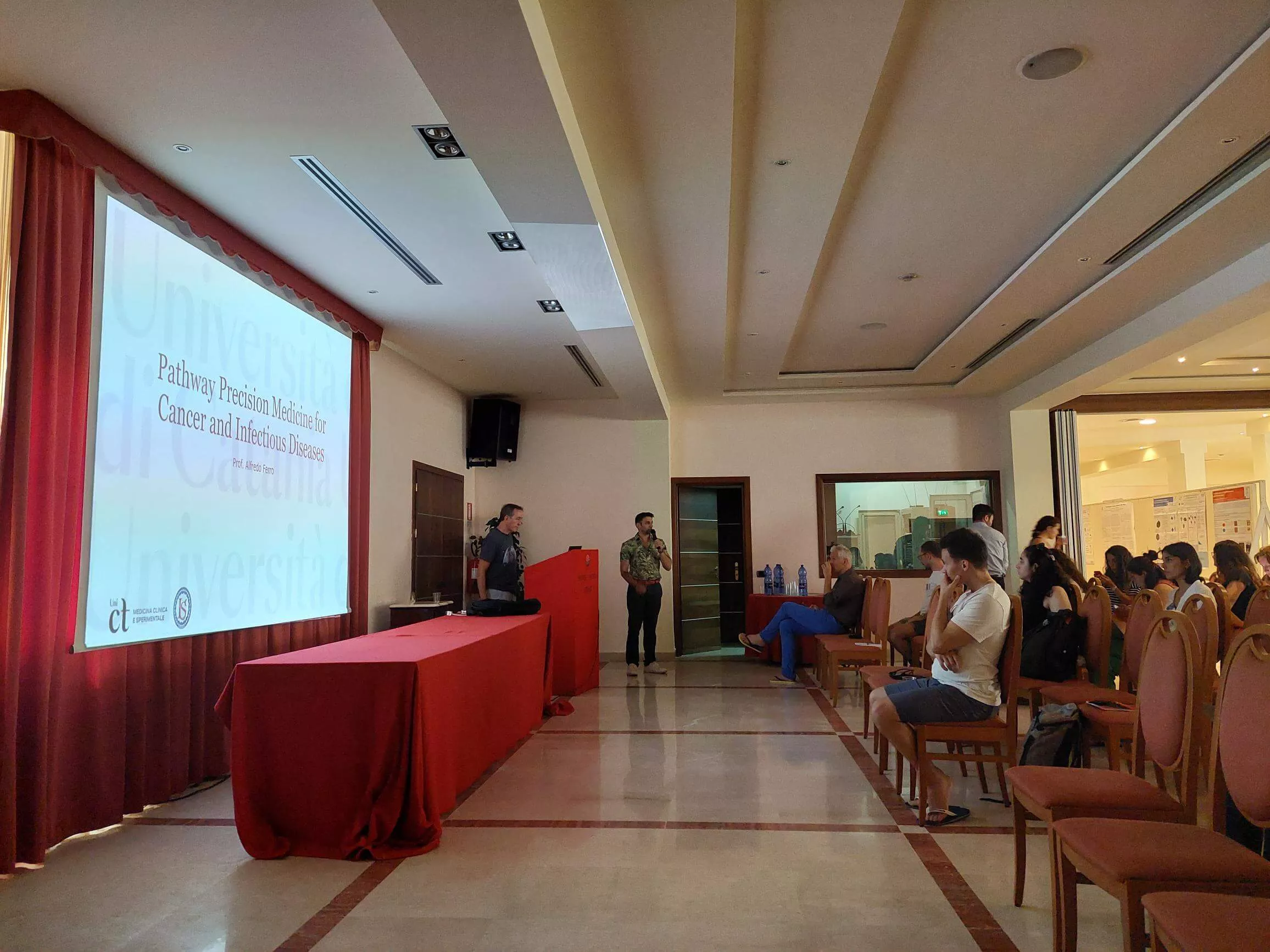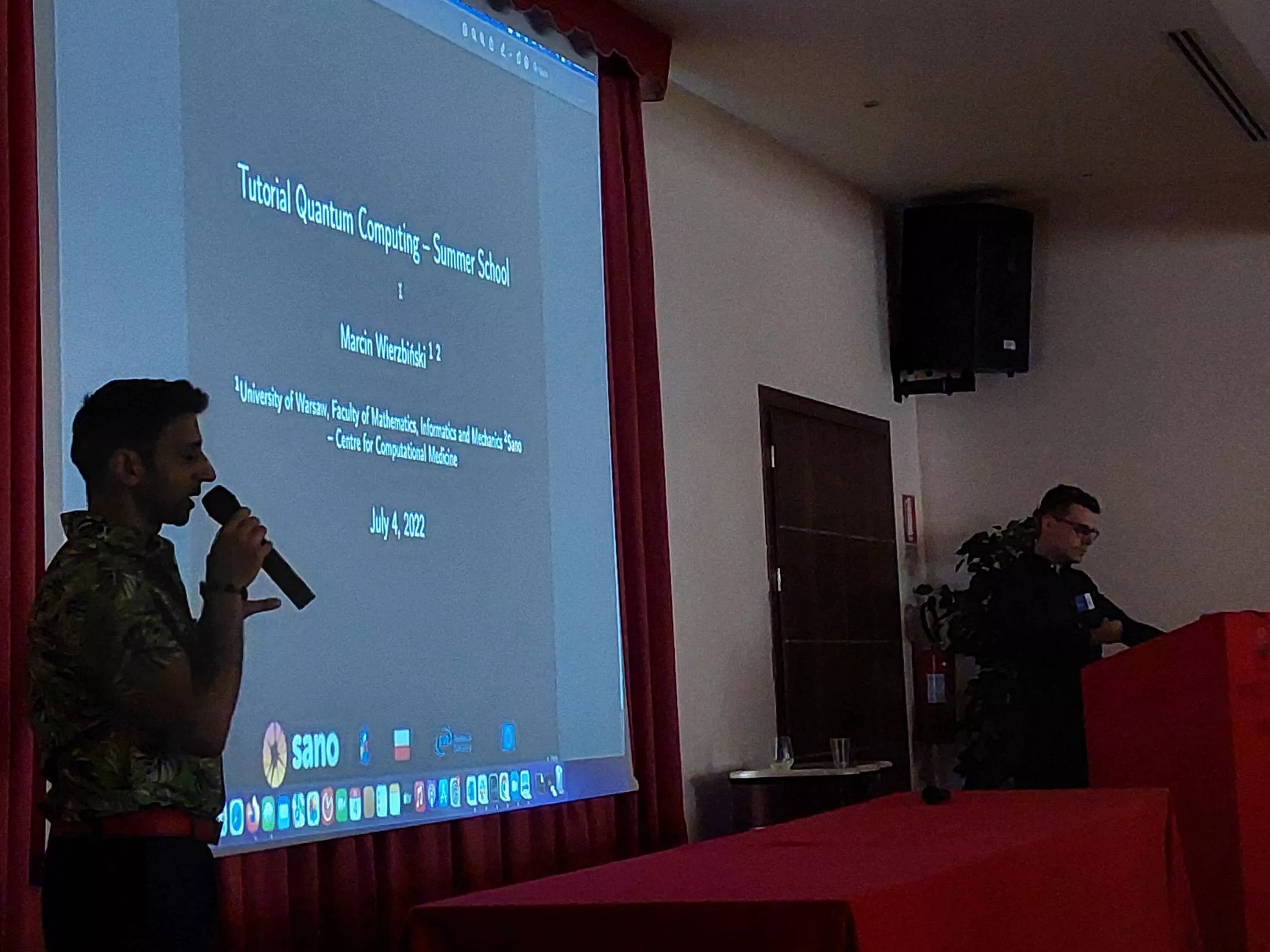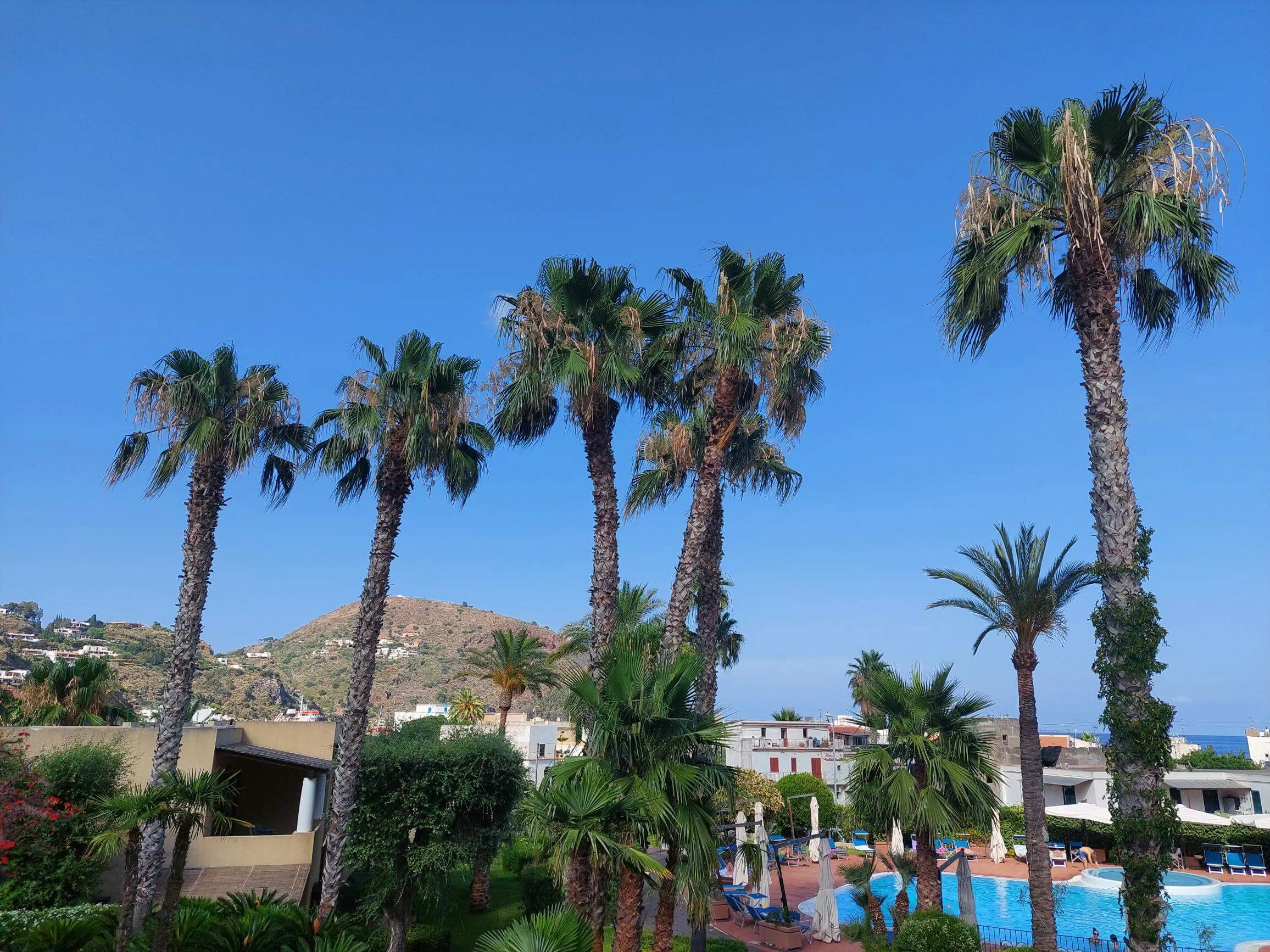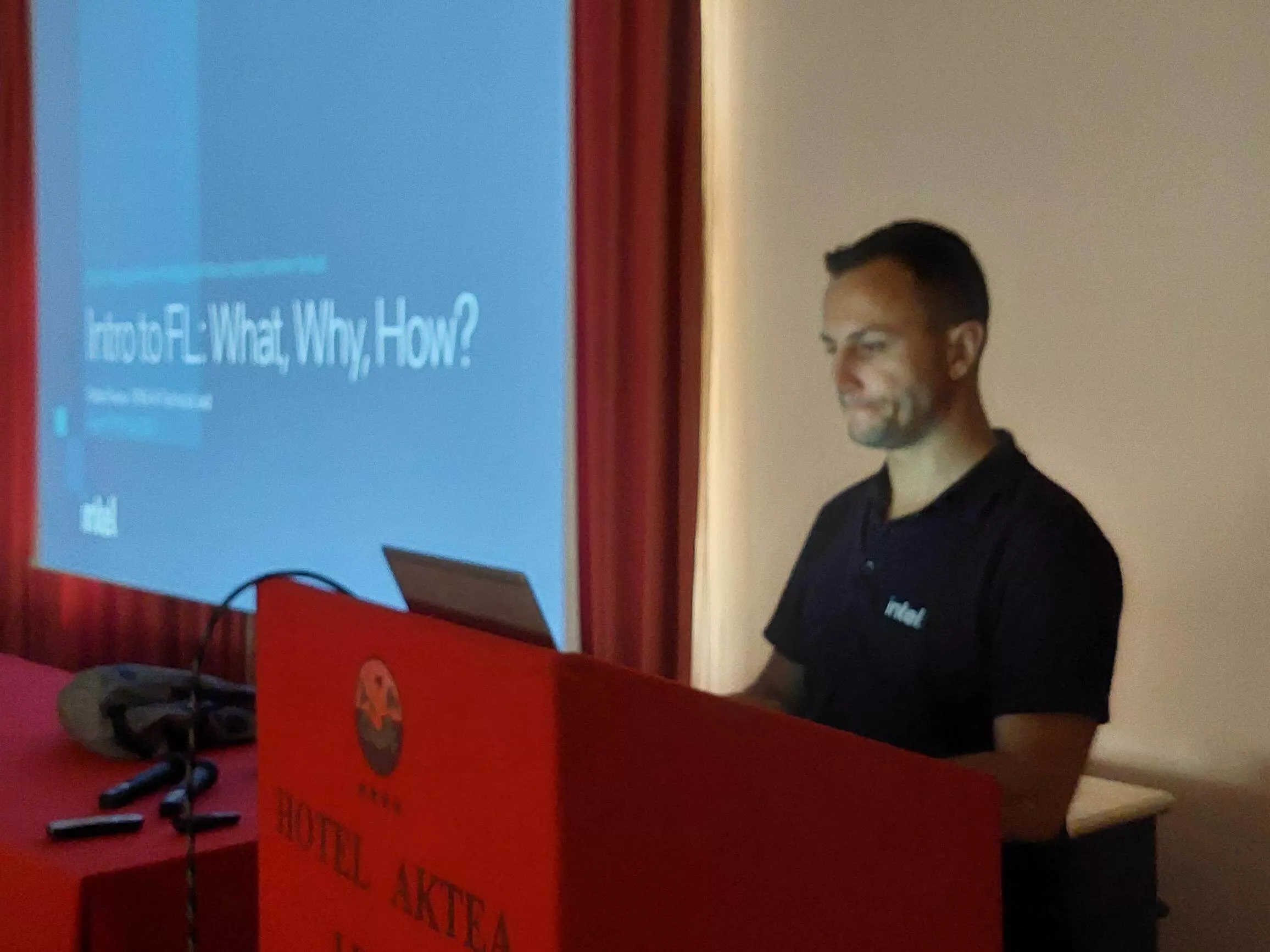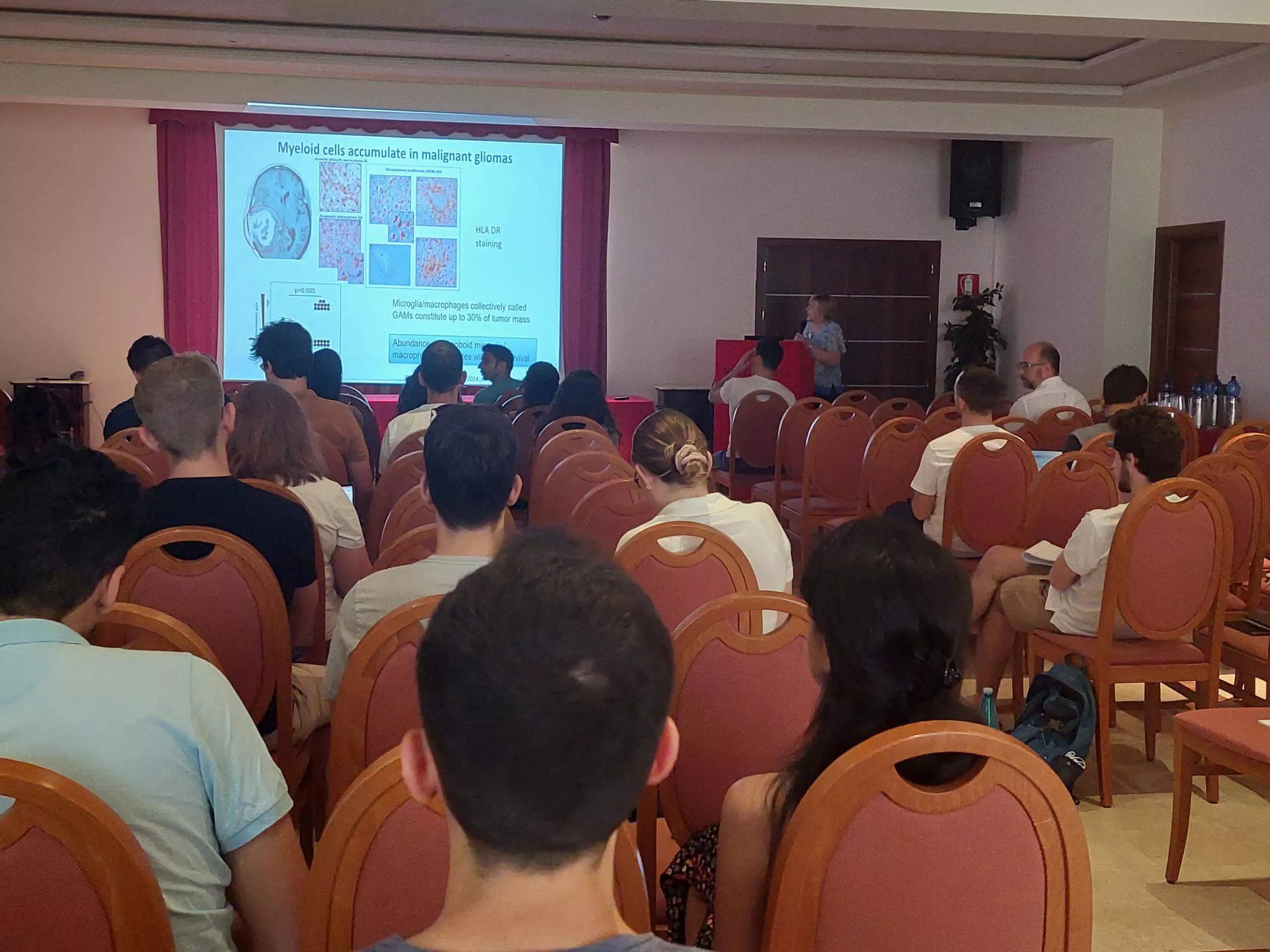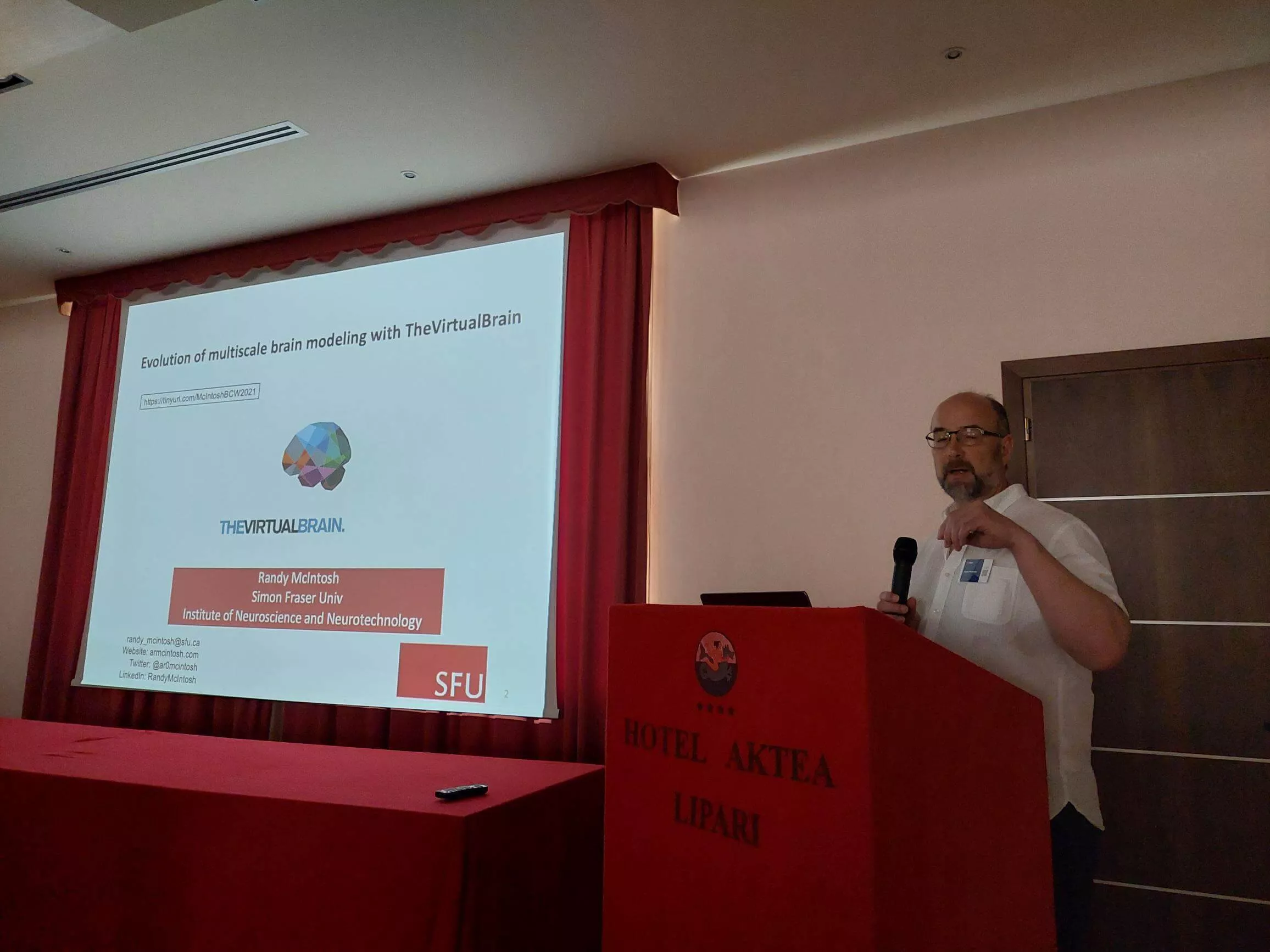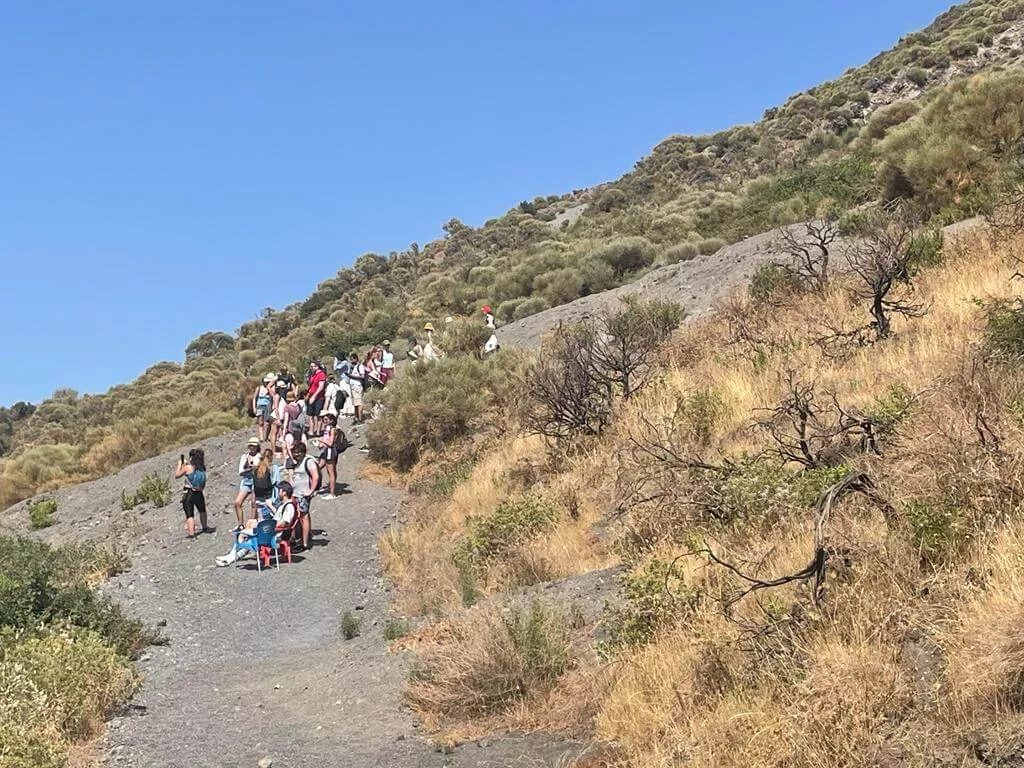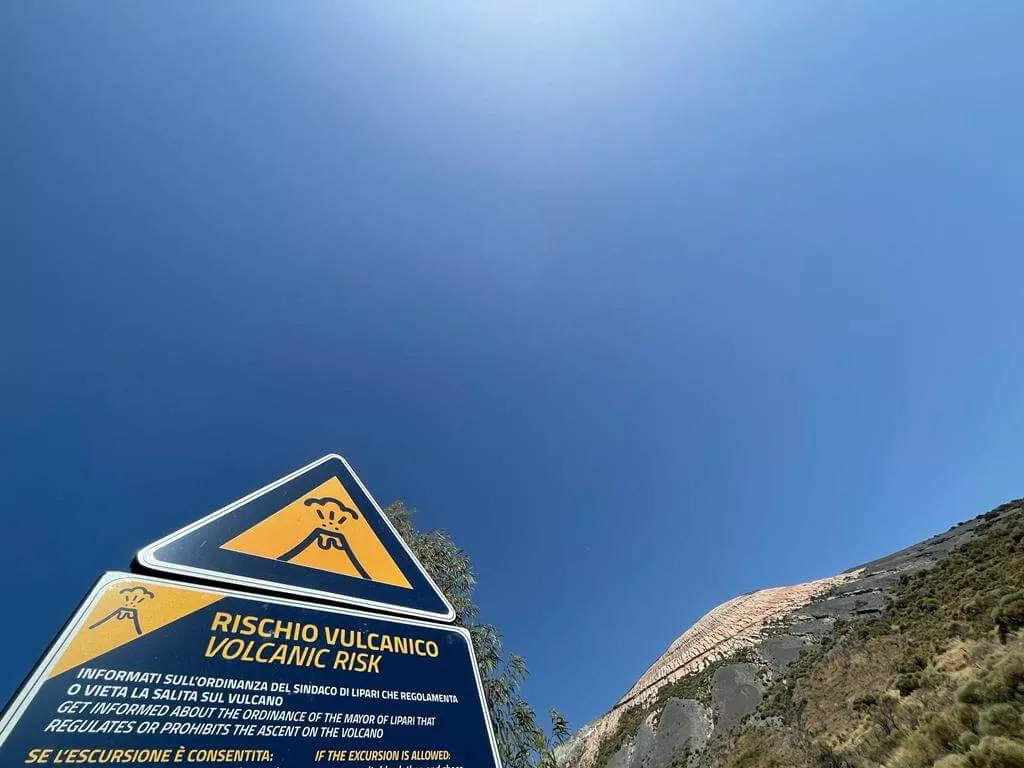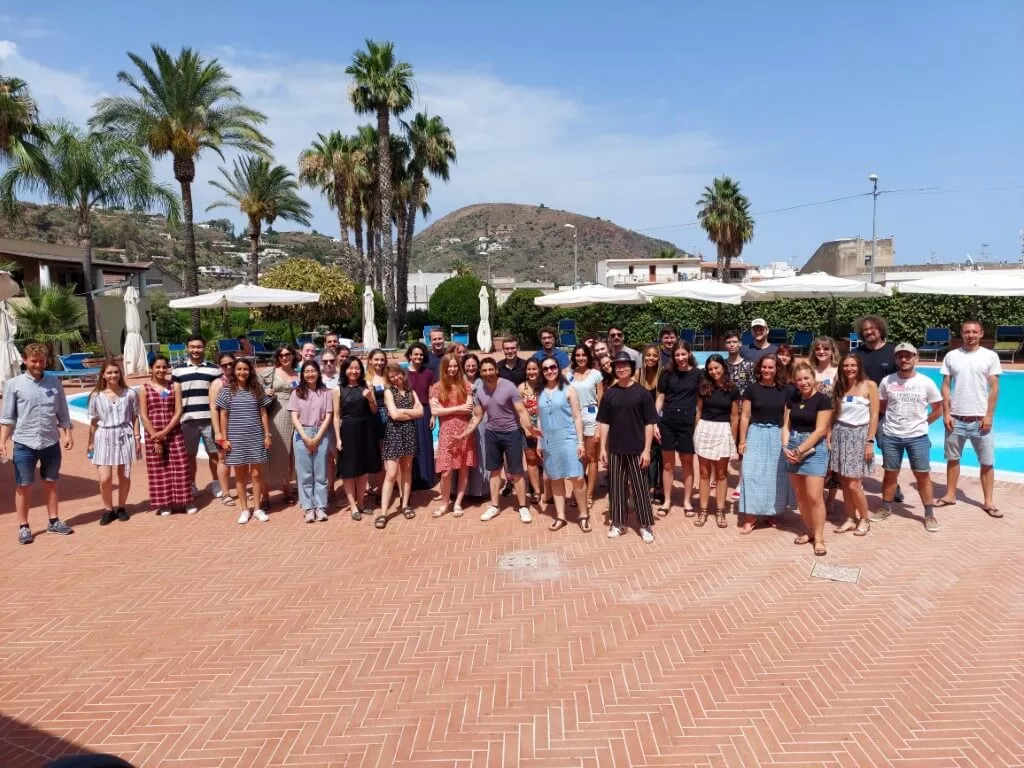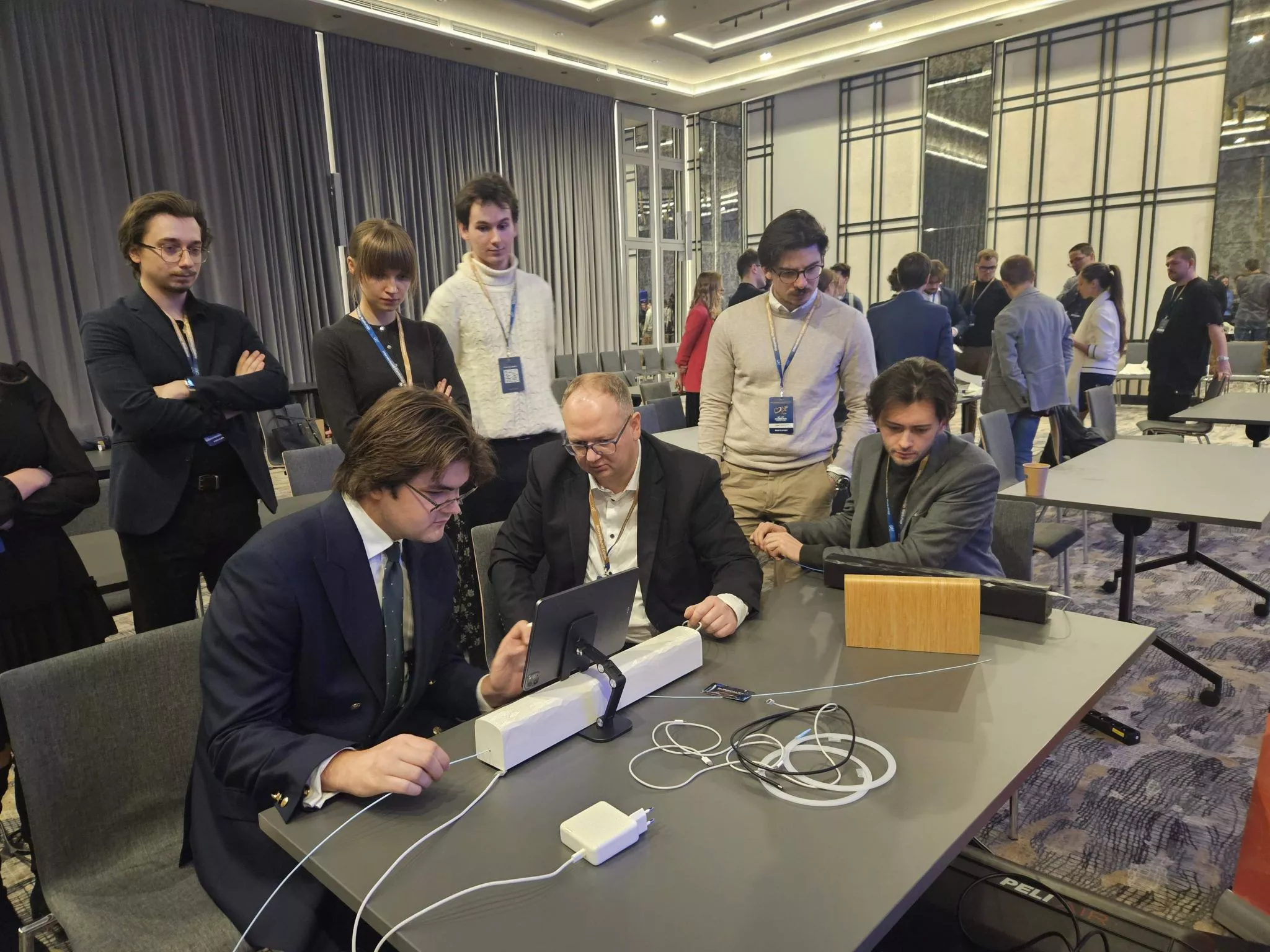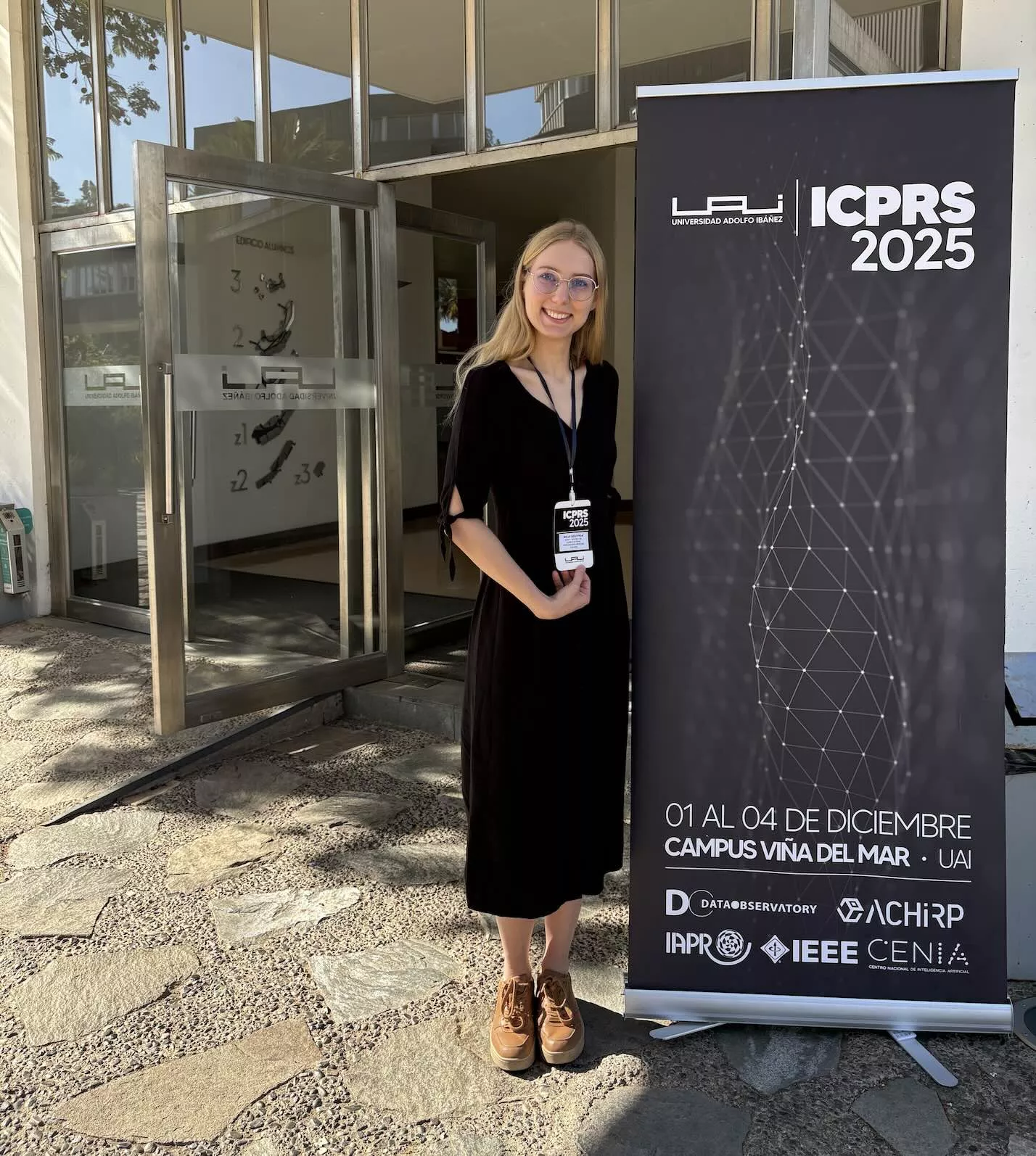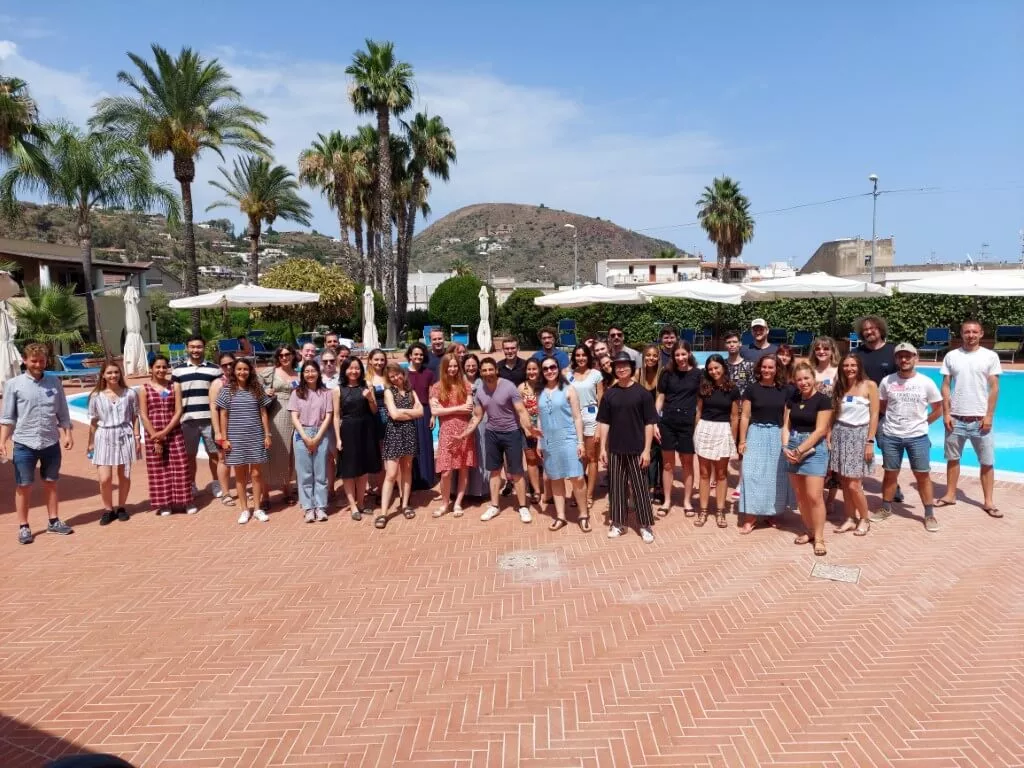
The first neuro summer school N3S2 is over
The five days of wonderful time, inspirational lectures, vivid talks, and practical workshops is over. The brain issues, neuroscience stuff, neuroimaging cases and computer sciences were widely discussed in beautiful surroundings of Lipari Island. The vibe and the energy were amazing! That was delightful to meet again in person and have possibility to networking and exchange the ideas.
Time for a short summary!
We’ve started the first Sano neuro summer school with the poster session. Then we have chance to listen Karl Friston lecture about free energy and brain causality. Karl is a theoretical neuroscientist and authority on brain imaging. He invented statistical parametric mapping (SPM), voxel-based morphometry (VBM) and dynamic causal modelling (DCM). We also discussed about general condition of artificial intelligence – how far we are, what the biggest challenges are still ahead of us.
After the siesta, Alain Chedotal – a French researcher specializing in the development of neural circuits, Director of the INSERM laboratory at the Institute de la Vision – talked about analyzing nervous system development with tissue clearing and 3D imaging.
Alfredo Ferro – Professor of Computer Science at University of Catania – talked about the pathway precision medicine for cancer. Alfredo has been leading an active research group in bioinformatics and datamining with particular emphasis on biomedical applications. In the most recent years his research activity has been focused on non-coding RNA computational analysis and biological networks and their biomedical applications. among the most relevant results we point out an algorithm to design synthetic microRNA with applications to cancer therapy validated in Prof.Croce Lab. the design of a multiple network alignment with application to proteomics. ncRNA biomarkers for several cancer classes have been discovered.
Finally, Marcin Wierzbiński – the student of Warsaw University and Sano Science scientific programmer – had a workshop dedicated to the quantum computing. Marcin focused on the explaining the concept of Quantum Computing, what is the qubit, quantum Gates & D-wave – Adiabatic approach. He also showed Ising Model and conducted a workshop on Graph Partitioning on D-wave.
It was very intensive day, the first from five!
The second day we began with three lectures:
- Mara Cercignani, Professor of Medical Physics, Head of MRI at Cardiff University, talked about biomarkers for effects of systemic inflammation on the brain. She remarks on how neuroinflamations relate to multiple sclerosis and demyalineation. She presented 3 systematic inflamation models as well as an intuitive explanation of how diffusion MRI works with a great analogy with the streets of Lipari. Finally, she reviews a technique called magnetization transfer as a marker for myelin in multiple sclerosis
Mara’s research focuses in the use of non-invasive imaging techniques to understand the brain and other internal organs of the body. She works with quantitative MRI techniques, i.e., using the MRI scanner to measure properties of the tissue. These techniques can be combined with other methods, such as EEG, MEG and TMS to link brain anatomy with function. An example of this kind of work includes using MRI to estimate the density of myelin (the fatty substance wrapped around neurons that enables brain signals to travel fast) and the speed of conduction.
She is particularly interested in applying these methods to the study of brain disorders, such as Multiple Sclerosis, dementia, and depression. It was a scientific pleasure to start a day with her lecture!
- Andras Jakab, PD Dr. med. PhD, Research Group Leader at University of Zürich, had amazing presentation about how the brain is built. He gave us an insight from MR imaging. I was fantastic talk about recent discoveries of his team regarding brain development in fetuses. He explained how insight derived from MRI scans in fetus can help prevent malformation (guiding also fetal surgery) and eventually inspire new therapeutical treatments in premature newborns.
Andras is a researcher working in an interdisciplinary environment that merges medical imaging, neuroanatomy, image processing and computer science at the University of Zurich. He is interested in how the human brain develops, functions and how it changes in diseases.
- Martijn van den Heuvel talked about a cross condition patterns of brain connectivity. He made a nice lecture of connectomics and graph analysis in brain networks. He thoroughly reviewed all the strengths of the method and in the event, he pinpointed as to where network analysis fails to provide a satisfying characterization.
Martijn, a Computational Neuroscientist, is a brain researcher at the University Medical Center Utrecht (at VU & VUMC Amsterdam UMC). The
Dutch scientist’s focus is on mapping the human connectome, the brain equivalent of the human genome. He carries out research into the brain’s connections and creating a map of how those connections are organized. Van den Heuvel uses special MRI techniques known as DWI and fMRI to make the connections visible.
“All those threads create a lot of magic” admitted Martijn, and it’s true – the pictures he showed us were magical!
After the lunch break, we had an extensive tutorial in Federated Learning. Walter Riviera from Intel explained how one can use the new openFL develop by Intel to create and train Machine Learning models (“You can also use Artificial Intelligence models since it is catchier”) with data spread across different machines.
The third day of neuro summer school #N3S2 we started from Walter Riviera’s presentation: Intel AI: how to accelerate research through SW optimizations. Then prof. Bożena Kamińska-Kaczmarek from Nencki Institute of Experimental Biology PAS had great talk about imaging brain tumors at single cell resolution and in spatial dimension. The last lecture on Wednesday was Randy Mcintosh’s about a unified theory of brain operation.
Walter presented a new tools developed by intel to speed up CPU processes. He introduced “Modin”, a high-performance data manager, and also showed how using the intel package machine learning algorithms in “scikit learn” speeds up in personal computers.
Professor Kaminska presented a nice and interesting overview of how histology can provide insight in glioblastomas. She discussed several findings as to how from these histological samples, combined also with computational techniques, can inspire potential treatments in humans.
Randy showed The Virtual Brain (TVB) – a computational platform for large-scale simulations of brain activity. During his presentation, he explained how this framework has been used to understand neural processes in aging, dementia and epilepsy. TVB also allows for simulating drug effects in brain networks.
Because summer school is not only about learning, but also having time for relax and spending time together, we had a trip on the Volcano Island.
7th July was the last day of lectures and tutorials.
Ujjwal Baid from Penn presented the framework of Brain Tumor Segmentation in the context of Deep Learning. He presented three MICCAI challenges designed specifically to push forward research in this area. BraTS, FeTS (for segmentation using Federated Learning) and BraTS-reg (adding registration between scans in different timepoints). The last slide was a demonstration of CaPTK, a toolbox developed by UPenn for reprocessing MRI data. It was nice overall!
The second presentation had Professor Luiz Pessoa from University of Maryland. He reviewed findings that suggest that emotion and cognition in the human brain should not be studied separately. He argued that both affect each other in a non-directional way. He putted emphasis in the study of subcortical regions that are rarely considered in this type of research. His speech was the prelude to a vivid discussion. If you’re interested in the subject, visit the website: https://lce.umd.edu/
Unfortunately, Dani S. Bassett was with us only remotely, but the presentation was great! She gave a lecture about cognitive effort from a mathematical point of view. Dani reviewed a simple network model able to explain changes and stability of controllable states in the brain; to provide a biological explanation of why is control expensive and how can it be understood in terms of information theory.
At the end of the #N3S2, Brain & More Lab from Sano Centre conducted a workshop. Alessandro Crimi, Luca Gherardini and Joan Falcó Roget had a tutorial about topological data analysis.
The Friday was a day for fun and amazing trip to Stromboli Island as well as Panarea.
Strong winds created extra excitement on the boat, the strongest survived 😉 the reward was swimming at sunset in the lagoon.
The group photo unfortunately does not include all the people, but we thank you all for being with us: our great speakers, and our wonderful participants!
The first Sano Summer School was a perfect occasion to put our brains together.


